Page is loading ...

YOUR WING IS HERE

CONTENTS
Pilots Manual (Eng) 2 > 11
Manuel de VOL (Fr) 12 > 21
Betriebs HANDBUCH (D) 22 > 35
Line Diagram 36
Riser Diagram/Link Lites 37
Technical Specifications 38
Materials 38
Version 1.0 Aug 2012
Page is loading ...

3
ENGLISH
T
hank you for choosing to fly Ozone.
As a team of free flying enthusiasts, competitors and adventurers, Ozone’s mission is to build agile paragliders of the highest quality with cut-
ting edge designs and performance and maximum security.
Confidence and belief in your paraglider is a far greater asset than any small gains in performance - ask any of the Ozone pilots on your local hills, or
those who have taken our gliders on ground-breaking adventures and stood on podiums around the world. All our research and development is con-
centrated on creating the best handling/performance characteristics possible with optimum security. Our development team is based in the south of
France. This area, which includes the sites of Gourdon, Monaco and Col de Bleyne, guarantees us more than 300 flyable days per year. This is a great
asset in the development of the Ozone range.
As pilots we fully understand just how big an investment a new paraglider is. We know that quality and value for money are essential considerations
when choosing your new paraglider; so to keep costs low and quality high we build all our wings in our own production plant. During production our
wings undergo numerous and rigorous quality control checks. This way we can guarantee that all our paragliders meet the same high standards that
we expect ourselves.
This manual will help you get the most out of your Utralite3. It details information about the Utralite3’s design, tips and advice on how best to use it
and how to care for it to ensure it has a long life and retains a high resale value. If you need any further information about Ozone, the Utralite3, or any
of our products please check www.flyozone.com or contact your local dealer, school or any of us here at Ozone.
It is essential that you read this manual before flying your Utralite3 for the first time.
Please ensure that this manual is passed on to the new owner if you ever resell this paraglider.
Safe Flying!
Team Ozone

WARNING TEAM OZONE
4
Paragliding is a potentially dangerous sport that can cause serious
injury including bodily harm, paralysis and death. Flying an Ozone pa-
raglider is undertaken with the full knowledge that paragliding involves
such risks.
As the owner of an Ozone paraglider you take exclusive responsibility
for all risks associated with its use. Inappropriate use and or abuse
of your equipment will increase these risks.
Any liability claims resulting from use of this product towards the
manufacturer, distributor or dealers are excluded.
Be prepared to practice as much as you can - especially ground han-
dling, as this is a critical aspect of paragliding. Poor control while on
the ground is one of the most common causes of accidents.
Be ready to continue your learning by attending advanced courses to
follow the evolution of our sport, as techniques and materials keep
improving.
Use only certified paragliders, harnesses with protector and reserve
parachutes that are free from modification, and use them only within
their certified weight ranges. Please remember that flying a glider
outside its certified configuration may jeopardise any insurance (e.g.
liability, life etc) you have. It is your responsibility as the pilot to verify
your insurance cover.
Make sure you complete a thorough daily and pre-flight inspection of
all of your equipment. Never attempt flying with unsuitable or dam-
aged equipment.
Always wear a helmet, gloves and boots.
All pilots should have the appropriate level of license for their respec-
tive country and third party insurance.
Make sure that you are physically and mentally healthy before flying.
Choose the correct wing, harness and conditions for your level of
experience.
Pay special attention to the terrain you will be flying and the weather
conditions before you launch. If you are unsure do not fly, and always
add a large safety margin to all your decisions.
Avoid flying your glider in rain, snow, strong wind, and turbulent
weather conditions or clouds.
If you use good, safe judgment you will enjoy many years of paraglid-
ing.
Remember, PLEASURE is the reason for our sport
Everyone at Ozone continues to be driven by our
passion for flying, our love of adventure and our
quest to see Ozone’s paraglider development create
better, safer and more versatile paragliders.
Paragliding design is led by the ever thoughtful David Dagault; Dav
has a wealth of experience both in competition, adventure flying and
paraglider design. Also on the design team are Russell Ogden, Luc
Armant and Fred Pieri.
Russ is a top competition pilot and ex paragliding instructor, he can
usually be found putting Dav’s latest creation through a series of
test manoeuvres.
Luc, a dedicated XC addict has a background in naval architecture.
He brings a wealth of knowledge and ideas to the design team and
works closely with Dav in the design process.
Fred is the latest addition to the team. He is a mathematian,
mechanical engineer and vol Biv specialist. Fred designed the Anti-G
and was the brainchild of the shark nose.
Back in the office Mike Cavanagh keeps control of the mayhem. Pro-
motion and Team pilots are organised by Matt Gerdes. Karine Mar-
coni, Jill Devine and Chloe Vila make sure we don’t spend too much
money and look after the ordering system.
Our manufacturing facility in Vietnam is headed up by Dr Dave Pilk-
ington, who works relentlessly manufacturing gliders and producing
prototypes as well as researching materials and manufacturing proc-
esses for our future products. He is backed up by Khanh and 700
production staff.

YOUR ULTRALITE 3
5
ENGLISH
Brake Lines
The brake line lengths have been set carefully during testing. We feel
it is better to have slightly long brake lines and to fly with a wrap
(one turn of line around the hand). However, if you do choose to ad-
just them, please bear in mind the following:
Ensure both main brake lines are of equal length.•
If a brake handle has been removed, check that its line is still •
routed through the pulley when it is replaced.
When the brake handles are released in flight, the brake lines •
should be slack. There must be a substantial “bow” in them to
guarantee no deformation of the trailing edge.
There must be a minimum of 10cm of free play before the brakes •
begin to deform the trailing edge. This prevents the trailing edge
from being deformed when using the speed system.
IMPORTANT: In the unlikely event of a brake line snapping
in ight, or a handle becoming detached, the glider can be
own by gently pulling the rear risers (C-risers) for direc-
tional control.
Risers
The Ultralite3 uses Technisangle Dyneema risers. These are lighter
and more practical than their predecessors, featuring Link Lite
maillons for greater ease of use. The A risers have a coloured tab to
make them easier to distinguish. See page 37
Accelerator System
Ensure the speed system is connected properly.
To use the speed system, ensure your hands are high (so that no
brake is applied) and then extend the speed bar loop smoothly with
your feet. Full speed is achieved when the pulleys on the risers are
touching. Once set up test the full range of the accelerator in calm
flying conditions; ensure that both risers are pulled evenly during
operation. Fine-tuning can be completed when you are back on the
ground.
The Utralite3 is the lightest paraglider Ozone have ever certified. It is the
perfect mountain wing, making the climb a pleasure whilst giving enough per-
formance to thermal, ridge soar and even take you XC. It has been developed
from the Ultralite/Ultralite2 which proved to a be a safe, stable planform with
impeccable launching characteristics and in-flight comfort, these characteris-
tics remain in the new version.
Our aim whilst designing the Utralite3 was to further reduce the weight
without compromising safety or durability. Weight saving has been further opti-
mised by 300gr; a simple, uncluttered wing design, using 27gr Porcher Marine
Skytex throughout except at the critical UV sensitive leading edge where the
slightly heavier, but more durable 36g Skytex has been used. The risers have
been redesigned, featuring thinner Amsteel Dyneema which is strong, warp re-
sistant and long lasting. Link lights have been added for greater practicability.
All of this innovation makes the Utralite3 19 weigh in at a mere 2.15kgs,
300gr lighter than its predecessor!
Available on 4 sizes, it is suitable for a wide range of pilot abilities from begin-
ner-intermediates to expert and a wide range of pilot weights. If you are a keen
mountaineer or hill climber and require the lightest possible glider, or a second
wing for travelling then the Utralite3 is for you.
Please note.The light weight materials will last very well, however they will not
accept the same level of abuse as a glider made from heavier cloth. Groundhan-
dle to a minimum and always ensure your glider is dry before packing.

BASIC FLIGHT TECHNIQUES
6
IMPORTANT: Using the accelerator decreases the angle
of attack and can make the glider more likely to collapse,
therefore using the accelerator near the ground should be
avoided.
We would advise you not to use the accelerator when ying
in turbulence.
Snow Tabs
The Utralite3 comes supplied with snow tabs to assist with launch-
ing on steep snow slopes. The tabs can be attached using a simple
larks foot on the available loops located on the top surface. The tabs
should be removed when not necessary, to avoid any wear or vibration
in flight.
Harness
The chest strap should be set betwen 44 and 46 cms (between the
risers) for all sizes.
Total Weight in flight
Each Utralite3 has been designed and/or certified with a defined
weight range. We recommend that you respect these weight ranges.
Preparation
Lay out the wing on its top surface in a pronounced arc, with the
centre of the wing higher than the tips. Lay out the lines one side
at a time. Hold up the risers and starting with the brake lines, pull
all lines clear. Repeat with the stabilo,D/C, B and A lines, laying the
checked lines on top of the previous set, and making sure no lines are
tangled, knotted or snagged. Mirror the process on the other side.
Take-off checklist:
1. Check reserve parachute - pin is in and handle secure
2. Helmet on and fastened
3. All harness buckles closed - check leg-loops again
4. Karabiners and maillons tight
5. Holding the A’s and your brake handles
6. Leading edge open
7. Aligned directly into wind
8. Airspace and visibility clear
Launching
Your Utralite3 will launch with either the forward or reverse tech-
niques.
Forward Launch - Nil to Light winds
When the wind is right, move forward, your lines should become
tight within one or two steps. The Utralite3 will immediately start to
inflate. Due to the extreme lightweight nature of the glider it is not
necessary to use force on the A risers to initiate the inflation. Only
once the glider is fully inflated with air should you put pressure on
the A risers to aid the complete inflation overhead.
Do not pull down or push the risers forward excessively, or the lead-
ing edge will deform and make taking-off difficult.
Move smoothly throughout the entire launch, there is no need to
rush or snatch at it. You should have plenty of time to look up and

7
ENGLISH
check your canopy before committing yourself.
Once you are happy that the Utralite3 is inflated correctly, acceler-
ate smoothly off the launch.
Reverse Launch - Light to Strong Winds
Lay out your Utralite3 as you would for the forward launch. However,
this time turn to face the wing, passing one entire set of risers over
your head as you turn. To inflate the Utralite3 hold the A-risers, but
mainly use your weight and tension in the lines to bring the glider up.
Only use gentle force on the A risers if necessary to bring the glider
fully overhead. Once the wing is overhead, brake gently to stop any
overshoot, turn and smoothly accelerate in order to launch.
In stronger winds, be prepared to take a few steps towards the
glider as it inflates. This will take some of the energy out of the glider
and it will be less likely to over fly you
IMPORTANT: Never take off with a glider that is not fully
inated or if you are not in control of the pitch/roll of your
wing.
In Flight Characteristics
The Utralite3 shows no unusual flying characteristics, consequently
it is suitable for a very wide range of pilot. Turns are smooth and co-
ordinated, on glide it remains solid and well pressured, even through
the accelerated speed range. It has a very high resistance to both
collapses and stalls. However, to get the most out of your Utralite3
we advise you to consider the following information:
Normal Flight
Flying at ‘trim speed’ (hands-up), your glider will achieve its ‘best
glide’ speed. Apply the brakes approximately 30cm to reach the
minimum-sink rate. To increase your speed for headwind glides, use
the accelerator bar which will give you an increase in speed of up to
10km/h.
Turning
To familiarise yourself with the Utralite3 your first turns should be
gradual and progressive.
To make efficient and co-ordinated turns with the Utralite3 first look
in the direction you want to go, then lean into it. Your first input for
directional change should be weight-shift, followed by the smooth
application of the brake until the desired bank angle is achieved. To
regulate the speed and radius of the turn, use the outer brake.
IMPORTANT: never initiate a turn at minimum speed (i.e.
with full brakes on) as you could risk entering a spin.
REMEMBER: This is a small glider with a high wing loading,
turns are consequently more dynamic and immediate rela-
tive to a larger model. Turns should be innitiated smoothly
and progressively, epecially when own close to a hill.
Landing
The Utralite3 shows no unusual landing characteristics but as a
reminder, here are some tips:
The Utralite3 shows no unusual landing characteristics but as a
reminder, here are some tips:
Allow the glider to fly at glide at full speed for your final descent •
until you are around 1 metre above the ground. Apply the brakes
slowly and progressively to slow the glider down until the glider
stalls and you are able to step on to the ground.
Be careful not to flare too hard at full speed as the glider might •
climb again before stalling. If the glider does begin to climb, ease
off the brakes until it stops climbing, then flare again, but slower
this time. If this does happen, don’t put your hands up! You
should keep the brakes at mid speed, stand up, be ready to run
and make sure you brake fully as you arrive on the ground.
Always land heading into wind!•
In light winds you need a strong, long and progressive flare to •
bleed off all your excess ground speed. In strong winds your for-
ward speed is already low so you are flaring to soften the impact
as you touch down.

8
the ears before nal are). But Ozone don’t advise you to
do this when it’s turbulent or windy due to the risk of a pos-
sible stall and lack of precision in steering.
Big ears and accelerator
Once the big ears are in you can further increase the sink rate by
pushing on the accelerator bar.
NEVER try to pull the Big Ears in with the speed bar on. This can lead
to a major asymmetric deflation.
Big ears and spiral dive
Whilst it is possible to enter a spiral dive whilst holding in Big Ears,
the high forces applied to the lower lines could exceed the breaking
strain of the lines leading to equipment failure!
Ozone do not recommend the use of this manoeuvre!
B-Line Stall
B-stall is for fast descents in emergency situations only. B-stall is
performed by symmetrically pulling down on the B-risers.
To initiate the B-stall place your fingers between the lines on the B
risers. Do not release the brake handles. As you pull the B-lines down
the airflow over the wing is broken and the glider loses its forward
speed but remains open and you will descend at around 6 m/s.
To exit the B-stall the B-risers should be released symmetrically and
in one smooth, progressive motion. The glider will resume normal for-
ward flight without further input. Check you have forward flight again
before using the brakes.
IMPORTANT: The pitching movement on exiting the B stall
is small but necessary. We recommend you do not brake
the glider until you are sure that the glider is ying again.
The load applied on the B lines during this manoeuvre is not very good
for your glider, only use it in emergency situations.
Spiral Dives
If you turn your Utralite3 in a series of tightening 360’s it will enter
If the wind is very strong, and you feel you might be dragged, stall
the glider with the C risers. This stalls the Utralite3 in a very quick
and controllable way and will drag you less then if you use the brakes.
Packing
Spread the glider flat on its top surface, then lay the lines on •
top. The risers should be laid on the ground, at the centre of
glider, near the trailing edge.
Take a wing tip and fold it in to the centre of the wing. Repeat •
this until the glider is folded up and approx. 60 cm’s wide.
Push out any remaining air by flattening the folded wing from the •
trailing edge to the leading edge.
Fold the glider so that the bundle is approximately the size and •
shape of the OZONE rucksack. Never roll the wing up as this
introduces unnecessary stresses into the fabric.
Always pack your Utralite3 as loosely as you can, as every fold •
weakens the cloth on any paraglider.
Finally, wrap the glider tie around the bundle and put it in the •
stuff sack.
Packing your glider using the concertina method, keeping the •
plastics flat may prolong the life your glider.
RAPID DESCENT TECHNIQUES
Big Ears
Folding in the wingtips of the Utralite3 increases its sink rate. To pull
big ears on the Utralite3, keep holding your brake handles and take
the outermost A-line on each side, then pull it down until the tips of
the wing fold under.
Do not use the brakes other than for re-inflation. For directional con-
trol while using the Big Ears, you should use weight shift steering.
To reopen your ears, release the outside A line: the glider should re-
open automatically. You can still help the reinflation by braking gently,
one side at a time to minimise the chance of inducing a stall.
IMPORTANT: You can land with the ears (you should release

9
ENGLISH
few seconds, reach up and push the A-risers forwards or apply the
speeds bar to regain normal flight.
Ensure the glider has returned to normal flight (check your airspeed)
before you use the brakes again.
IMPORTANT: only a few cms of input from your brakes can
maintain your wing in the stall. Always release your wraps
if you have taken them!
Deflations
If you have a collapse, the first thing to do is to control your direc-
tion: You should fly away from the ground or obstacles and other
pilots, or at least not to fly into them... Asymmetrical collapses can
be controlled by weight shifting away from the collapse and applying a
small amount of brake to control your direction. This act will most of
the time be enough for a full recovery of the wing.
Once a glider is deflated it is effectively a smaller wing, so the wing
loading and stall speed are higher. This means the glider will spin or
stall with less brake input than normal. In your efforts to stop the
glider turning towards the collapsed side of the wing you must be
very careful not to stall the side of the wing that is still flying. If you
are unable to stop the glider turning without exceeding the stall point
then allow the glider to turn whilst you reinflate the collapse.
If you do have a deflation which does not spontaneously reinflate,
make a long smooth progressive pump on the deflated side. This
pumping action should take about 2 seconds per pump. Pumping too
short and fast will not reinflate the wing and pumping too slow might
take the glider too close, or beyond, the stall point.
Symmetrical collapses reinflate without pilot input, however 15 to
20cm of brake applied symmetrically will speed the process. If you
simulate a symmetrical collapse during an SIV course it is important
to use both the A and Baby A risers and to pull evenly to induce a
symmetrical collapse. Use of just A risers or uneven pulling may lead
to the glider collapsing only in the centre section with the tips fly-
ing forward to meet in the middle, leading to an increased risk of a
a spiral dive. This will result in rapid height loss. To initiate a spiral,
look and lean in to the direction you want to go, then smoothly pull
down on the inside brake. The Utralite3 will first turn almost 360
degrees before it drops in to the spiral. Once in the spiral you must
apply a little outside brake to keep the outer wing tip pressured and
inflated.
Safe descent rates of 8 metres per second (1500 ft/min approx.)
are possible in a spiral dive, but at these rates the associated high
speeds and G-forces can be disorientating, so pay particular atten-
tion to your altitude.
To exit the spiral dive, return your weight shift to a central position
and then slowly release the inside brake. The Utralite3 shows no indi-
cation of remaining neutral in the spiral dive, however if it does so,you
should always be prepared to pilot the wing out. To do so smoothly
use opposite weight shift and apply a small amount of outside brake
and the glider will start to resume normal flight. Never attempt to
recover from a spiral with hard or quick opposite inputs as this will
result in an aggressive climb and surge.
IMPORTANT: Spiral dives with sink rates over 8 m/s are
possible, but should be avoided. They are dangerous and
put unnecessary strain on the glider. Spiral dives cause
disorientation and need time and height to recover. Do not
perform this manoeuvre near the ground.
INCIDENTS
Deep Stall / Parachutal stall
It is possible for gliders to resume their normal shape on a very slow
release of the B-lines, but carry on descending vertically and without
full forward motion. This situation is called ‘deep stall’ or ‘parachutal
stall’.
It is highly unlikely to happen on any OZONE glider, but should it
happen, your first reaction should be to fully raise both brakes and
the glider should return to normal flight. If nothing happens after a

10
cravat occurring.
If your Utralite3 collapses in accelerated flight, immediately release
the accelerator to slow down to trim speed and after a 90 deg turn
the canopy will reinflate and return to normal flight.
IMPORTANT: No pilot and no glider are immune to collapses
however active ying will virtually eliminate any tendency
to collapse. When the conditions are turbulent, be more
active and anticipate the movements of your wing. Always
be aware of your altitude and do not over-react. We advice
you to keep hold of your brakes. Do not y in turbulent
conditions.
Cravats
When the tip of your wing gets stuck in the lines, this is called a
‘cravat’. This can make your glider go into a rotation which is difficult
to control. The first solution to get out of this situation is to pull
down the stabilo line (red line on the B riser), while controlling your
direction, you must be careful with any brake inputs not to stall the
opposite wing.
If this doesn’t work, a full stall (symetrical or asymetrical) is the only
other option. This shouldn’t be done unless you have been taught how
to do it and can only be done with a large amount of altitude. Re-
member if the rotation is accelerating and you are unable to control
it, you should use your reserve whilst you still have enough altitude.
IMPORTANT: A bad preparation on launch, aerobatic ying,
ying a wing of too high a level or in conditions too strong
for your ability, are the main causes of cravats.
Towing
The Utralite3 may be tow-launched. It is the pilot’s responsibility to
use suitable harness attachments and release mechanisms and to
ensure that they are correctly trained on the equipment and system
employed. All tow pilots should be qualified to tow, use a qualified tow
operator with proper, certified equipment, and make sure all towing
regulations are observed.
MAINTENANCE
Caring Tips
DO NOT drag your wing along the ground to another take-off •
position - this damages the sailcloth. Lift it up and carry it.
DO NOT try to open your wing in strong winds without untan-•
gling the lines first - this puts unnecessary strain on the lines.
DO NOT walk on the wing or lines.•
DO NOT repeatedly inflate the glider and then allow it to crash •
back down. Try to keep this movement as smooth as possible by
moving towards the glider as it comes down.
DO NOT slam your glider down on the ground leading edge first! •
This impact puts great strain on the wing and stitching and can
even explode cells.
FLYING in salty air, in areas with abrasive surfaces (sand, rocks •
etc.) and ground handling in strong winds will accelerate the ag-
ing process.
Your Ozone wing has an opening closed using Velcro on the trail-•
ing edge of the tip called the ‘butt hole’. This has been designed
to easily empty all the things which have been accumulating in
your wing (sand, leaves, rocks, mobile phones etc).
If you fly with a wrap, you should regularly undo the twisting that •
appears on the main brake lines. By twisting the line become
shorter and you can end up with a constant tension on the trail-
ing edge (which can lead to problem on launch, stalling, glider not
flying symmetrically, ...)
Change your main brake lines if they are damaged.•
It is recommended that you regularly CHECK your wing, especially
after a heavy period of use, after an incident or after a long period of
storage.
Storage
Always store all your flying equipment in a dry room, protected from
direct heat.
Your wing should be dry before being packed away. Heat and humidity
are the worst factors in damaging your glider. (Storing a damp glider

11
ENGLISH
in your car under the sun would be terrible for example).
Dry your wing preferably out of the sun, in the wind. Never use a hair
dryer, etc.
If you land in the salt water, you must clean it with fresh water first
and then dry it.
Take care that no insects get packed away with the wing they may
eat the cloth and make some holes in a bid to escape, they can also
leave acidic deposits if they die and decompose.
Cleaning
Any kind of wiping/scratching can damage the coating of the cloth.
We recommend for cleaning your Utralite3, you use a soft cloth
dampened only with water and to use gentle movements little by little
across the surface.
Never use any detergent or chemical cleaners
Wing Repairs
If the rip is small, you can fix it yourself. You’ll find all the materials in
the repair kit you need.
The fabric can be simply mended with the sticky rip stop / spinnaker
tape.
You can find more information about repairing your wing on the Ozone
website, including step by step instructions with pictures.
Damaged line
Any line that is damaged should be replaced by a qualified profession-
al. It is important that the replacement line is made from the same
material, has the same strength and the same length. Once the line
has been replaced, inflate and check the glider before flying. If you do
not have access to an Ozone dealer you can order individual lines at
www.flyozone.com
Maintenance Checks
Your wing should be checked by a qualified professional for the first
time after 24 months, and thereafter every 12 months. If used heav-
ily we recommend checks every 80 hours.
You are responsible for your flying kit and your safety depends on it.
Take care of it and have regularly a inspect all of its components.
Changes in a wings flying behaviour, are also indicators of the gliders
aging, if you notice any changes you should have the wing checked
before flying again. These are the basic elements of the check up (full
details and permissable figures can be found on our website).
Modifications
Your Ozone Utralite3 was designed and trimmed to give the optimum
balance of performance, handling and safety. Any modification means
the glider loses its certification and will also probably be more dif-
ficult to fly. For these reasons, we strongly recommend that you do
not modify your Utralite3 in any way.
QUALITY
At Ozone we take the quality of our products very seriously, all our
gliders are made to the highest standards in our own manufacturing
facility. Every glider manufactured goes through a stringent series of
quality control procedures and all the components used to build your
glider are traceable. We always welcome customer feedback and
are committed to customer service. We will always undertake to fix
problems not caused by general wear and tear or inappropriate use.
If you have a problem with your glider please contact your dealer/dis-
tributor who will be able to decide upon the most appropriate action.
If you are unable to contact your dealer then you can contact us
directly at [email protected]
Page is loading ...
Page is loading ...
Page is loading ...
Page is loading ...
Page is loading ...
Page is loading ...
Page is loading ...
Page is loading ...
Page is loading ...
Page is loading ...
Page is loading ...
Page is loading ...
Page is loading ...
Page is loading ...
Page is loading ...
Page is loading ...
Page is loading ...
Page is loading ...
Page is loading ...
Page is loading ...
Page is loading ...
Page is loading ...
Page is loading ...
Page is loading ...
Page is loading ...

37
RISERS / ÉLÉVATEURS / TRAGEGURTE
Non Accelerated (mm)
Accelerated (mm)
A 500
B 500
C 500
A 400
B 400
C 500
To open the Link Lite in order to change lines:
Ouvrir le Link Lite pour changer des suspentes:
So öffnet man die Link Lites um die Leinen zu wechseln:
1. Loosen loop that holds the black
tag.
Desserrer la boucle qui tient la
languette noire.
Löse die Schlaufe die das schwarze
Gurtband hält
2. Feed black tag through loop
Faire passer la languette noire
au travers de la boucle.
Schiebe das schwarze Gurtband durch die
Schlaufe
3. Pull out Loop.
Défaire la boucle.
Ziehe die Schlaufe heraus.
To re connect the Link Lite connections reverse the above procee-
dure. Ensure that the connecting loops are correctly and neatly in
place before flying.
Faire l’opération inverse pour refermer le Link Lite. S’assurer que les
boucles de connections sont bien correctement en place avant de
voler.
Um die neuen Leinen einzufädeln, gehe einfach in der umgekehrten
Reihenfolge vor und stelle sicher, dass die Verbindungsloops korrekt
und ordentlich geschlossen sind bevor du fliegst.
LINK LITE CONNECTIONS

38
MATERIALS
All OZONE gliders are made from the highest quality materials avail-
able. Your Ozone Utralite3 is constructed from:
Upper-surface
Hybrid
Porcher Marine Skytex 7000 E71A
Porcher Marine Skytex 9017 E68A (Leading edge)
Lower-surface
Porcher Marine Skytex 7000 E71A
Internal Ribs
Porcher-Marine Skytex 7000 E29
Leading-edge reinforcement
Plastic P25 2.5mm
Lines
Lower cascades - Edelrid Aramid, 8000 series - 190/230kgs
Middle cascades - Edelrid Aramid, 8000 series - 130/190kgs
Upper cascades - Edelrid Aramid, 8000 series - 050kgs
Risers and hardware
Riser webbing – Technisangle 7mm
Pulleys – Ronstan Lightweight plastic
All these components have been selected for their renowned quality,
weight saving and durability.
TECHNICAL SPECIFICATIONS
No. of Cells
35 35 35 35
Projected Area (m2)
17 18.7 20.2 22
Flat Area (m2)
19 21 22.9 25
Projected Span (m)
7.8 8.2 8.4 8.7
Flat Span (m)
9.3 9.6 10.2 10.7
Projected Aspect Ratio
3.6 3.6 3.6 3.6
Flat Aspect Ratio
4.5 4.5 4.5 4.5
Root Chord
2.55 2.67 2.79 2.92
Glider Weight (Kg)*
2.145 2.330 2.495 2.700
In-Flight Weight Range 55-90 55-90 55-90 65-110
Certication EN/LTF
B B B B
19
21
23 25
Ultralite weights may vary up to 50gm per size due to slight variations in
the manufacturing of the fabric used.
*
Page is loading ...
Page is loading ...
-
 1
1
-
 2
2
-
 3
3
-
 4
4
-
 5
5
-
 6
6
-
 7
7
-
 8
8
-
 9
9
-
 10
10
-
 11
11
-
 12
12
-
 13
13
-
 14
14
-
 15
15
-
 16
16
-
 17
17
-
 18
18
-
 19
19
-
 20
20
-
 21
21
-
 22
22
-
 23
23
-
 24
24
-
 25
25
-
 26
26
-
 27
27
-
 28
28
-
 29
29
-
 30
30
-
 31
31
-
 32
32
-
 33
33
-
 34
34
-
 35
35
-
 36
36
-
 37
37
-
 38
38
-
 39
39
-
 40
40
-
 41
41
-
 42
42
Ask a question and I''ll find the answer in the document
Finding information in a document is now easier with AI
in other languages
- français: Ozone Ultralite 3 Le manuel du propriétaire
- Deutsch: Ozone Ultralite 3 Bedienungsanleitung
Related papers
Other documents
-
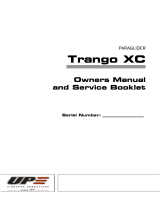 UP Trango XC Owner Manual And Service Booklet
UP Trango XC Owner Manual And Service Booklet
-
LumiSource LS-CHLOE WMB AUW Assembly Instructions
-
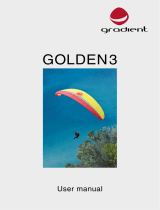 Gradient GOLDEN3 User manual
Gradient GOLDEN3 User manual
-
Skywalk CHILI 3 User manual
-
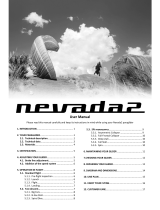 Gradient Nevada2 User manual
Gradient Nevada2 User manual
-
SUPAIR ACCESS 2 AIRBAG User manual
-
PROAIM CR-200 User manual
-
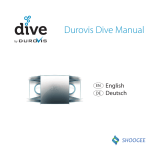 Durovis Dive 5 User manual
Durovis Dive 5 User manual
-
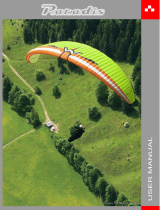 MAC PARA Paradis User manual
MAC PARA Paradis User manual
-
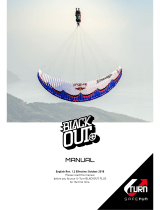 U-Turn BLACKOUT PLUS User manual
U-Turn BLACKOUT PLUS User manual















































